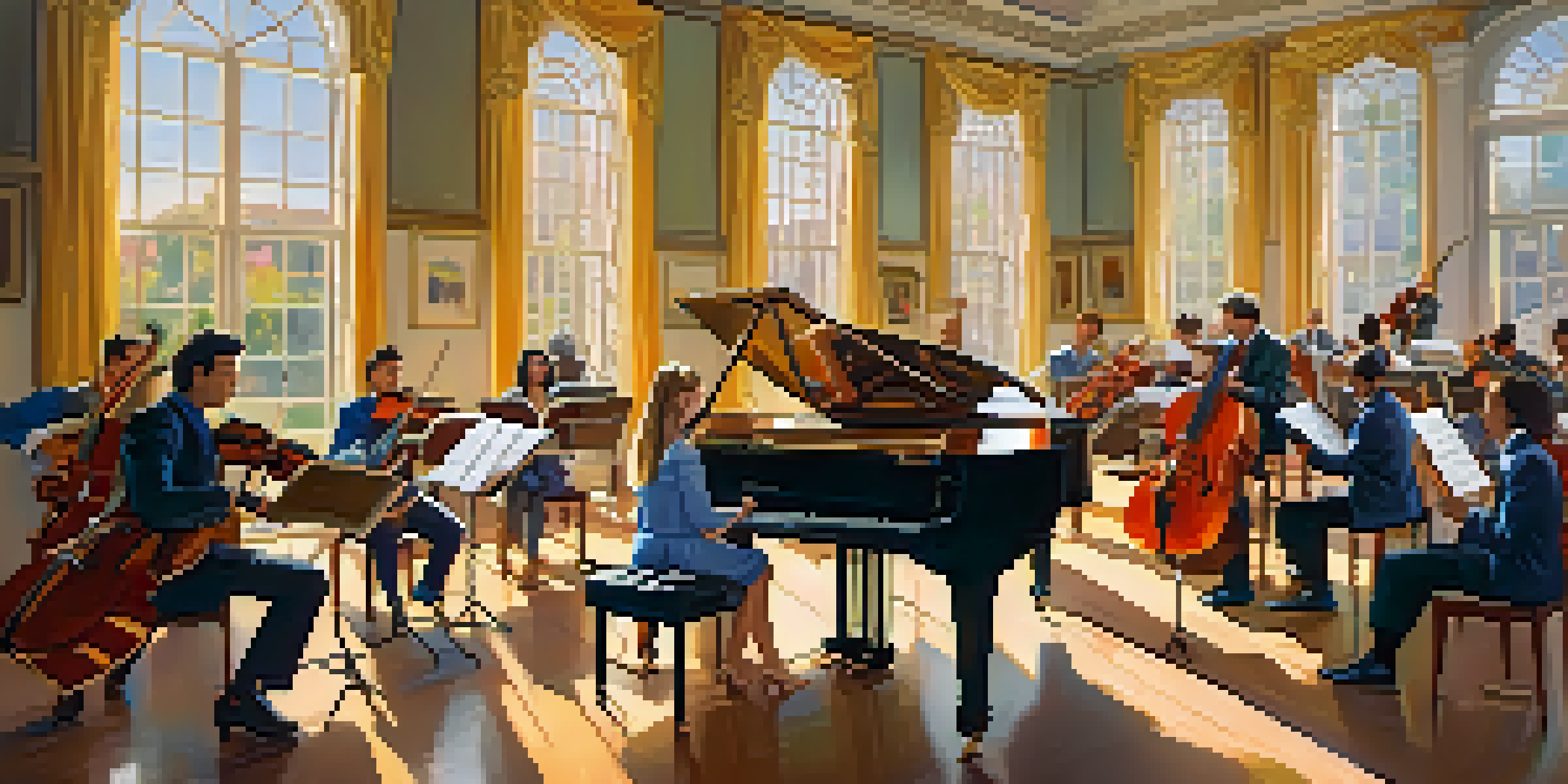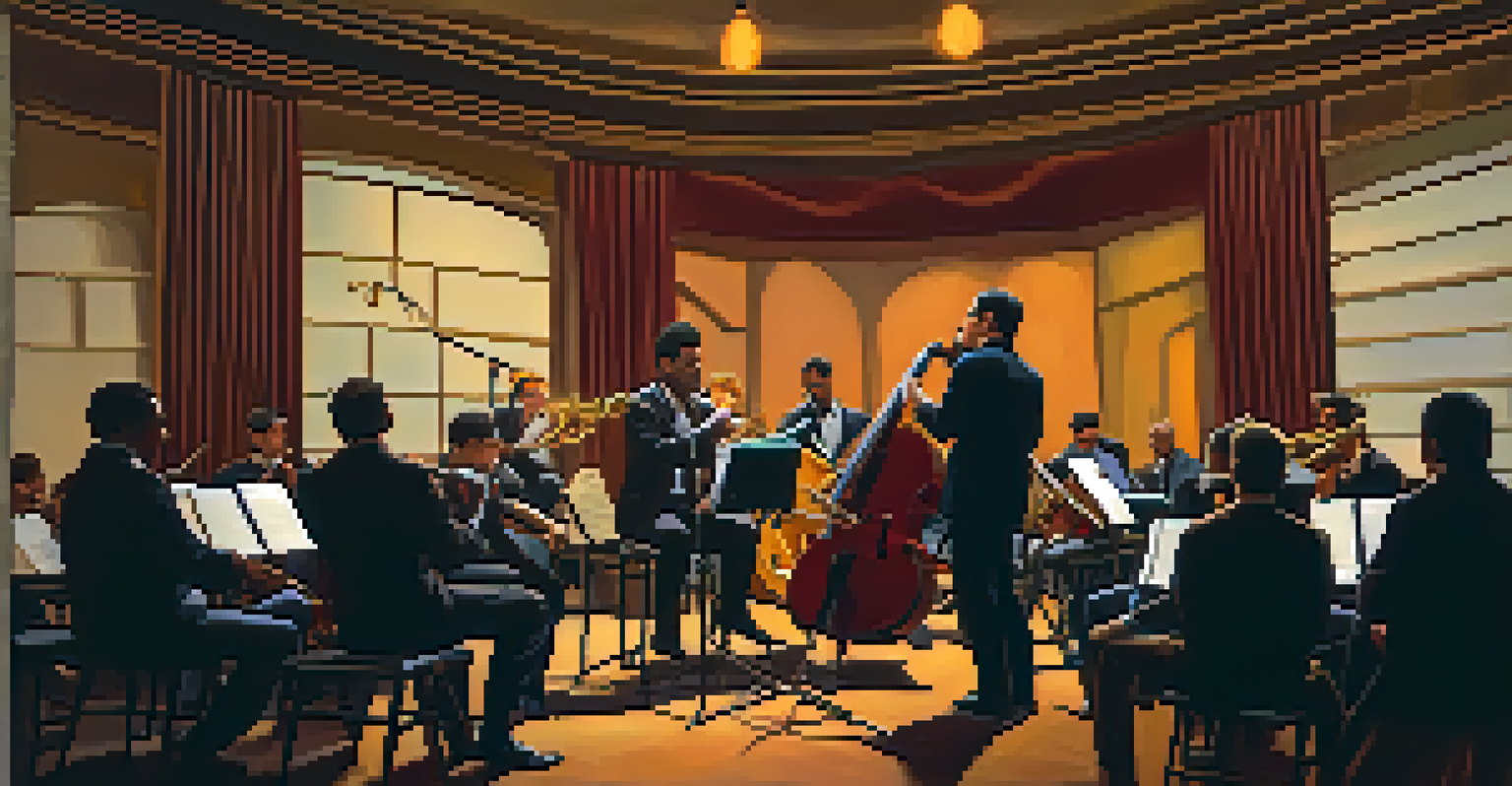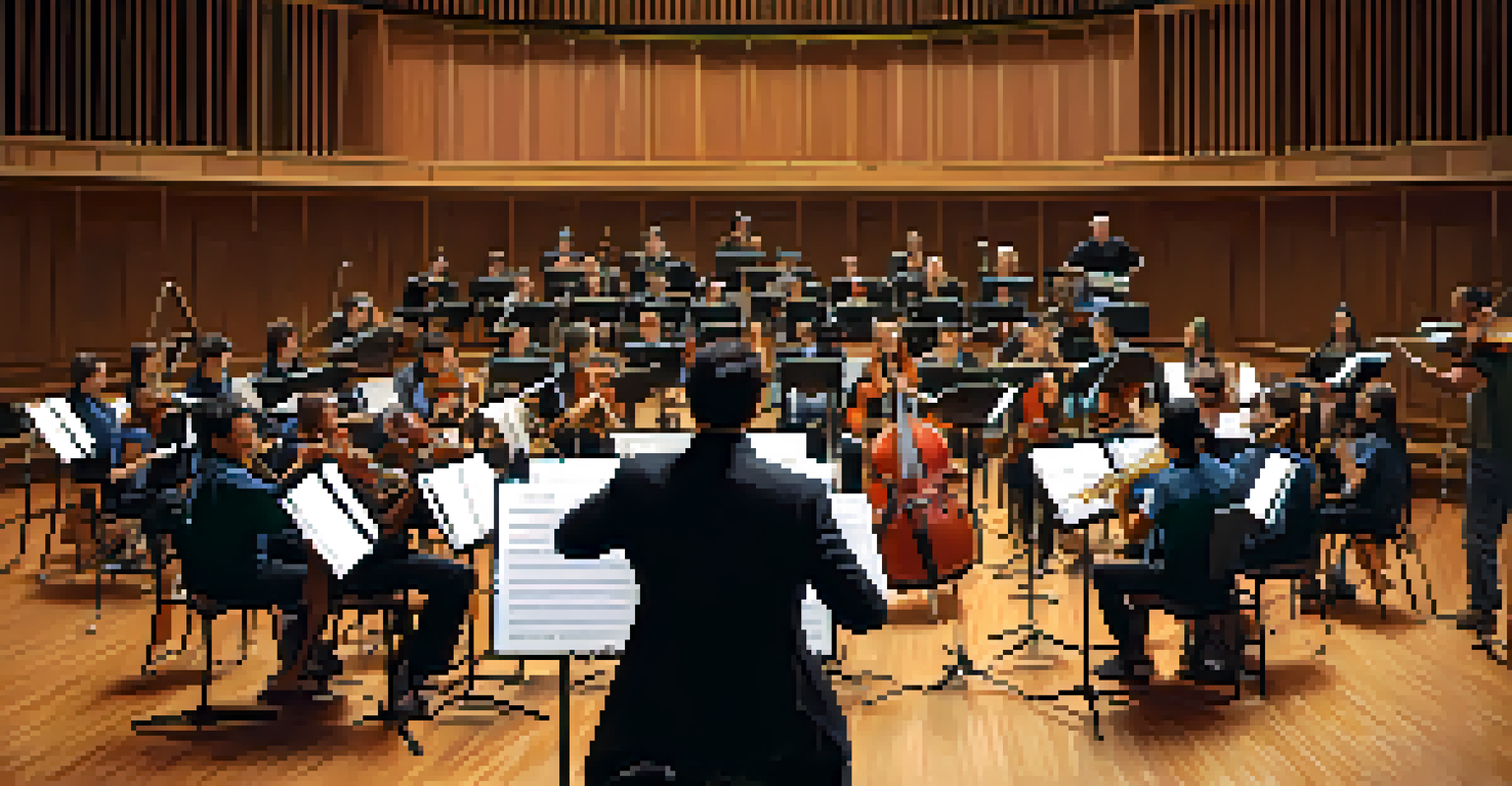The Art of Arranging: Transforming Music for Performance

Understanding the Role of an Arranger in Music
An arranger plays a crucial role in shaping how a piece of music is presented. They take the basic melody and harmonies and enhance them with instrumentation, dynamics, and structure. This transformation turns a simple song into a full-fledged performance piece that can resonate with audiences.
Music can change the world because it can change people.
Think of an arranger as a chef, taking basic ingredients and turning them into a gourmet dish. Just as a chef decides which flavors to bring out, an arranger determines which instruments will bring the music to life. Their goal is to create a cohesive sound that amplifies the original intent of the piece.
Ultimately, the work of an arranger helps bridge the gap between the composer’s vision and the audience's experience. By carefully crafting arrangements, they ensure that the music is both engaging and memorable.
The Creative Process: From Composition to Arrangement
The journey from a composed piece to a fully arranged performance is both creative and technical. Arrangers begin by analyzing the original composition, identifying its core elements, and deciding what to keep or modify. This step is essential to understand the emotional impact and message of the music.

Once the foundational elements are established, the arranger starts experimenting with different instruments and harmonies. This stage is akin to an artist mixing colors on a palette—each choice affects the overall feel of the piece. For example, adding strings can evoke warmth, while brass can bring a bold energy.
Arrangers Enhance Musical Presentations
An arranger transforms basic melodies into engaging performance pieces by adding instrumentation and structure.
The process is iterative; arrangers often go through multiple drafts, refining their choices until the arrangement feels just right. This attention to detail is what elevates a performance from ordinary to extraordinary.
Choosing the Right Instruments for Your Arrangement
Selecting instruments is one of the most critical aspects of arranging music. The choice can significantly alter the mood and texture of the piece. For instance, a soft ballad might benefit from gentle acoustic guitars and strings, while an upbeat jazz number could shine with brass and percussion.
The music is not in the notes, but in the silence between.
Consider the strengths of each instrument and how they can complement one another. Just like in a conversation, different voices bring a richer dialogue; similarly, a blend of sounds can create a more dynamic musical experience. Balance is key—too many competing sounds can lead to chaos.
Ultimately, the right instrumentation can enhance the emotional journey of a piece and draw the audience in. An arranger must always keep the overall vision in mind while making these choices.
The Importance of Dynamics and Contrast in Arranging
Dynamics and contrast are vital elements that keep audiences engaged during a performance. They add depth and variety, moving the listener through a range of emotions. By strategically placing louder and softer sections, arrangers can create a compelling narrative within the music.
Think of dynamics like the ebb and flow of the ocean; they help build tension and release, guiding the listener through peaks and valleys. For example, a sudden quiet moment can draw in the audience, making the following crescendo even more impactful.
Instrument Selection Shapes Emotion
Choosing the right instruments is crucial, as they significantly impact the mood and texture of the music.
Using contrast not only adds excitement but also highlights the strengths of different instruments. An arrangement that carefully balances these elements will leave a lasting impression on the audience.
Adapting Arrangements for Different Performance Settings
Different performance settings require unique approaches to arranging music. A piece intended for a small, intimate venue may need a lighter touch and more subtle instrumentation. Conversely, music meant for a large concert hall will often require fuller arrangements to ensure it resonates throughout the space.
Understanding the context of a performance is crucial for an arranger. For instance, outdoor venues might necessitate stronger rhythms and more pronounced melodies to cut through background noise. The goal is to ensure that the audience receives the intended experience, regardless of the setting.
Ultimately, adapting arrangements to fit specific performance environments is a skill that can enhance both the music and the audience's enjoyment.
Collaborating with Musicians: The Arranger’s Role
Collaboration is at the heart of arranging music for performance. Arrangers often work closely with musicians to ensure that their vision translates effectively. This teamwork can lead to valuable insights and adjustments that enhance the overall arrangement.
When musicians are involved in the arrangement process, they can provide feedback on what works best for their instrument and playing style. This can lead to creative solutions that an arranger might not have considered initially. It’s a bit like a dance, where each partner must be in sync to create something beautiful together.
Collaboration Improves Arrangements
Working closely with musicians allows arrangers to refine their vision and create more authentic performances.
Ultimately, a successful collaboration results in an arrangement that feels authentic and resonates with both the performers and the audience.
The Final Touches: Preparing for Performance
Once the arrangement is complete, it's time to prepare for the performance. This stage includes rehearsing with the musicians, adjusting dynamics, and ensuring all parts fit together seamlessly. Rehearsals are critical, as they allow the arranger to make final tweaks and observe how the arrangement translates live.
During rehearsals, it's essential to focus on aspects like timing and expression. Just as a painter steps back to view their work as a whole, arrangers must listen carefully to how each part contributes to the overall sound. This attention to detail can make all the difference in a live setting.

In the end, the preparation phase ensures that the arrangement comes alive on stage, captivating the audience and creating a memorable experience.